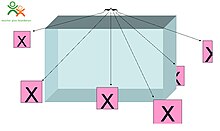

|
No edit summary
|
No edit summary
|
||
| Line 44: | Line 44: | ||
==External links== |
==External links== |
||
* |
*[http://www.pbs.org/opb/historydetectives/investigations/708_near.html] - PBS History Detectives Investigation. |
||
* |
*[http://www.pbs.org/opb/historydetectives/pdf/709_near.pdf] - PBS History Detectives Investigation transcript. |
||
[[Category:Warning systems| ]] |
[[Category:Warning systems| ]] |
||
The National Emergency Alarm Repeater (N.E.A.R.) is a civilian warning device in the form of a small 2-3" square box that is designed to plug into a home power outlet to receive a special signal sent over the power transmission lines. The N.E.A.R. program was developed to supplement the existing siren warning systems and radio broadcasts in the event of a nuclear attack. For unspecified reasons, the program went defunct and the devices were destroyed by their respective manufacturers. The publicized policy of mutually assured destruction and other factors helped make the program unnecessary.[1]
A Time Magazine article, CIVIL DEFENSE: Buzzers Mean Bombs in the November 14, 1960 issue is one of the only pieces of original documentation on the internet about the device and program. The article outlines a new program that supplements the then "basically unsound" warning system consisting of localized sirens and the Conelrad radio-alert system. The U.S. Army argued that in the age of intercontinental ballistic missiles a civil-defense warning system should be capable of warning 90% of the population within 30 seconds after a signal is given by the national civil-defense center in Colorado Springs.
The device is a buzzer installed into common outlets in homes, offices, factories and public buildings. The devices would be set off in an emergency by a specific voltage transmitted by the local power companies.
The indoor buzzers would be supplemented with outdoor loudspeakers scattered throughout every city. In case of attack, these loudspeakers would carry a warning signal, followed by instructions on what to do. [2]
The following text from the original patent granted in 1966 describes the device and it use:
The present invention relates to electrical control circuits for producing a delayed action and controlled duration audible alarm, and more particularly to a receiving instrument preferably designed to be used in homes, offices and other buildings as a component of the National Emergency Alarm Repeater (NEAR) system and more particularly to such a receiver incorporating a solid state device for its major control function.
The task of providing a means of alerting the Nation of an impending enemy attack or other civil disaster has been given by Congress to the Office of Civil Defense. This office recognized early that some means had to be devised to supplement outdoor sirens in providing more effective warning since sirens often can not be heard indoors, and many suburban and rural areas are not within range of hearing of the nearest municipal siren system. After considerable research and investigation the conclusion was reached that it would be necessary to provide an indoor system which could be coordinated with outdoor warning systems already installed.
Such a system must reach the greatest possible number of homes and still not entail undue and prohibitive costs. Therefore it has been decided to use existing electrical power lines and to provide special generators to transmit an electrical signal of controlled frequency and duration over these lines in the event of a national emergency. The generators will b e used to superimpose a signal at a frequency of 270 cycles per second on the 60 cycles per second power which is normally transmitted over the power lines. A receiver uni, plugged into an ordinary A.C. wall receptacle, will respond with a loud buzzer-like sound when activated by an actuation signal of sufficient duration.
The August History Detectives on PBS (Episode 709, Story 3) featured the N.E.A.R Device.
History detective, Gwen Wright investigates a N.E.A.R. device marked “Essex Wire Corporation”, found by Wayne Gilbert in a box that he picked up at a ham fest in Colorado.
Wayne thinks the device may have been intended to help Americans believe they could survive a soviet nuclear attack. Wayne would like Gwen and the History Detectives to find out if the device was mass produced, and what the device was used for.
Gwen suggests that In the early 1960’s the Cold War debate over civil defense policies escalated following the Berlin Crisis of 1961, initiating the age of fallout shelters and films like “Duck and Cover". The thinking at the time suggested that people could survive a nuclear attack.
During her investigation Gwen visits a local historian in Charlotte, Michigan with a different looking N.E.A.R. device made by a division of General Motors. Charlotte, Michigan was selected as a near testing site in 1960 and the device comes from the archives.
In a Federal Civil Defense Administration memo Gwen learns the program was launched in 1956. The program tested the inexpensive internal warning system for the home and work. At the sign of an attack, NORAD would send out an alert from Colorado Springs that would travel through the electric system to make the device go off. The device was activated by a special high frequency electric current that had to be initiated externally.
One of the problems with the program was there was limited instructions on what to do and no follow-up information on what was exactly happening. Also, when alarms sounded people would get in their cars and leave the area causing traffic to jamb the highways. The tests, ran in different communities, identified these problems. After a full decade of Federal support for testing and development, the program was terminated.[4]
